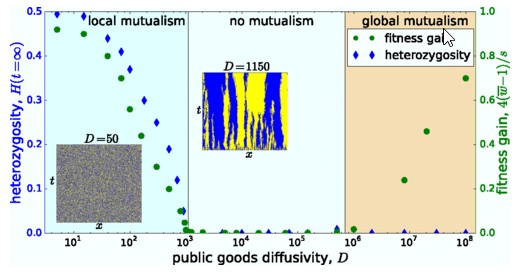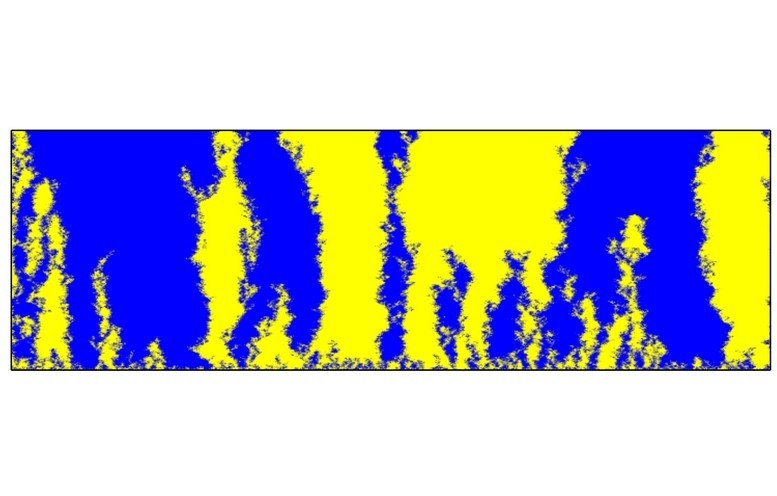Some microbe species produce nutrients that are consumed by neighboring species, which in turn share nutrients that they produce, but a mystery of this relationship has puzzled scientists: Why do some of the shared molecules have chemical units that seemingly have the sole function of slowing the diffusion of nutrients to neighboring microbes? A team of researchers from Boston University thinks they may have found the answer in a consideration of cooperation in game theory.
“The diffusion of small molecules could have a profound effect on microbial population dynamics,” Boston University’s Rajita Menon told The Speaker. “The main effect of this diffusion is the reduction of the effective strength of natural selection, which can lead to the loss of mutualism.”

“We provide a theory for the phenomena observed in recent experiments that could potentially explain why cooperatively growing microbes modulate the diffusivities of secreted nutrients.”
When microbes produce shared nutrients at a small diffusion rate, they are brought close together to intermix, and this cooperation is stable over time. But, Menon and her adviser and follow researcher Dr. Kirill Korolev believe, as a species releases nutrients into its environment at a greater rate, mixing decreases.
This is because neighboring organisms can benefit from the diffusion even at significant distances from the producing organisms, and this means that the producing organisms lose their neighborhood benefits.
When two species share nutrients, the researchers found, the species that diffuses nutrients more slowly dominates the relationship. It can even force its neighbor towards extinction.
Biologists have used standard game theory to try to understand why some microbes produce biomolecules that have the sole purpose of slowing diffusion of nutrients to neighboring molecules, but until now the theory has not brought satisfactory answers. Menon and Korolev, however, state that the model can still be used if we consider that greater sharing of metabolites reduces cooperation strength, causing a nonequilibrium phase transition toward species extinction.

“Traditional game theory considers pair-wise microbe to microbe interactions under the assumption that microbes interact only with their closest neighbors,” Menon told us. “However, unlike human societies or bee colonies, microbial communities rarely rely on direct contact. Instead, microbes primarily communicate through a many to many exchange of diffusible molecules. Our theory describes how nutrient diffusion renormalizes the strength of selection and influences the spatial distribution of species. We are able to integrate the complex effects of nutrient diffusion in our model while retaining the essential simplicity and accessibility of game theory. “
“Simple models of cooperation in microbial ecosystems have not been able to take nutrient diffusion into account, while more complicated models that try to do so are difficult to analyze and test. Our work was motivated by this gap in understanding that could be potentially important to maintaining cooperation in microbial colonies. The results of our study indicate that fast-diffusing nutrients weaken mutualism.”
There is, the researchers conclude, a critical level of nutrient sharing the creates stable cooperation over time.
“It is… harder to establish mutualism than we would expect from models that neglect nutrient diffusion,” Menon stated. “Further, species can gain a fitness advantage by producing faster or slower diffusing nutrients in a natural environment. They have an incentive to actively control the diffusion constants of their nutrients.”
By Cheryl Bretton
